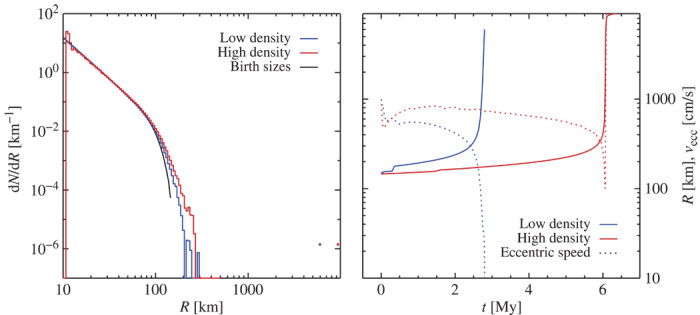Fig. 10. Planetesimal growth at 25 AU.

Two models are considered: a low density model where the internal density is set to ρ• = 0.5 g/cm3, similar to comets and binary Kuiper belt objects, and a high density model where the internal density is set to ρ• = 2 g/cm3, similar to the dwarf planet Ceres. The low density model has turbulent stirring α = 10−6, whereas the high density model has α = 10−5. Both models display ordered growth up to 300-km radii, with a steep size distribution beyond 100-km sizes. This is followed by a runaway growth of a single, massive body. The right panel shows the size of the largest body as a function of time as well as the speed relative to a circular orbit. The runaway growth is facilitated by a steep decline in the eccentricity of the orbit because the high pebble accretion rate damps the eccentricity.
